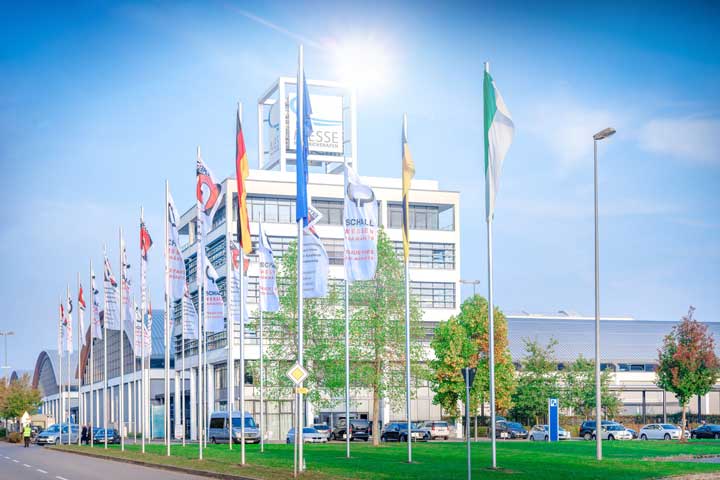Sustainability 28. August 2024
SWARCOFORCE Glass Filler Beads
Sustainable reinforcing material for the plastics industry: SWARCOFORCE glass filler beads impress with a low CO2 footprin
The average CO2 footprint (cradle-to-gate) for all SWARCOFORCE glass filler bead production sites is 1.14 kg CO2e/kg product. Compared to competitor products, this value is exemplary and sustainable fillers for the plastics industry are increasingly in demand. SWARCO Indusferica uses the Ecochain Helix software solution for comprehensive LCA analyses. This enables emissions in the supply chains, all production processes and throughout the entire product life cycle to be precisely calculated and continuously optimised. Under the leadership of the SWARCO Global Glass Beads Technology Centre and in collaboration with recognised research institutions, SWARCO conducts research into sustainable products and processes worldwide.
SWARCO Indusferica favours the circular economy
The glass filler beads are melted from soda-lime glass cullet. By using high-quality recycled glass (post-industrial waste), SWARCO Indusferica saves a significant amount of energy. The origin of the glass is always traceable and it is purchased in the regional vicinity of the production plants. In this way, SWARCO Indusferica avoids long transport routes. Customers are offered a combination of road and rail transport for the delivery of SWARCOFORCE glass filler beads in order to reduce further transport emissions. Resource-conserving packaging is used for SWARCOFORCE glass filler beads, with attention paid to high recyclability. The waste heat from the production process is used to heat the buildings or to supply neighbouring industrial plants. SWARCOFORCE glass filler beads are inert and waste treatment does not result in any significant downstream emissions.
The average CO2 footprint (cradle-to-gate) for all SWARCOFORCE glass filler bead production sites is 1.14 kg CO2e/kg product. Compared to competitor products, this value is exemplary and sustainable fillers for the plastics industry are increasingly in demand. SWARCO Indusferica uses the Ecochain Helix software solution for comprehensive LCA analyses. This enables emissions in the supply chains, all production processes and throughout the entire product life cycle to be precisely calculated and continuously optimised. Under the leadership of the SWARCO Global Glass Beads Technology Centre and in collaboration with recognised research institutions, SWARCO conducts research into sustainable products and processes worldwide.
SWARCO Indusferica favours the circular economy
The glass filler beads are melted from soda-lime glass cullet. By using high-quality recycled glass (post-industrial waste), SWARCO Indusferica saves a significant amount of energy. The origin of the glass is always traceable and it is purchased in the regional vicinity of the production plants. In this way, SWARCO Indusferica avoids long transport routes. Customers are offered a combination of road and rail transport for the delivery of SWARCOFORCE glass filler beads in order to reduce further transport emissions. Resource-conserving packaging is used for SWARCOFORCE glass filler beads, with attention paid to high recyclability. The waste heat from the production process is used to heat the buildings or to supply neighbouring industrial plants. SWARCOFORCE glass filler beads are inert and waste treatment does not result in any significant downstream emissions.

